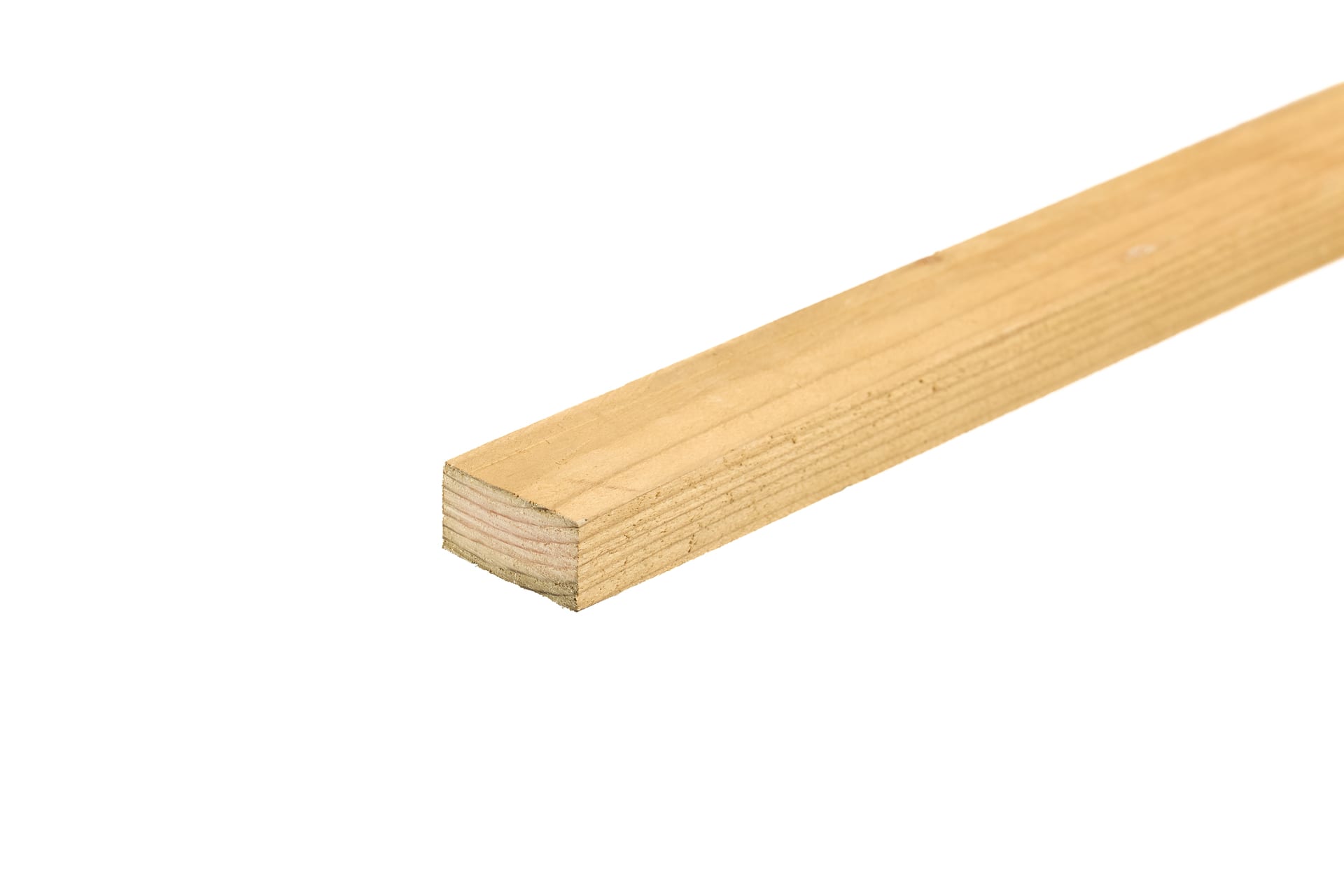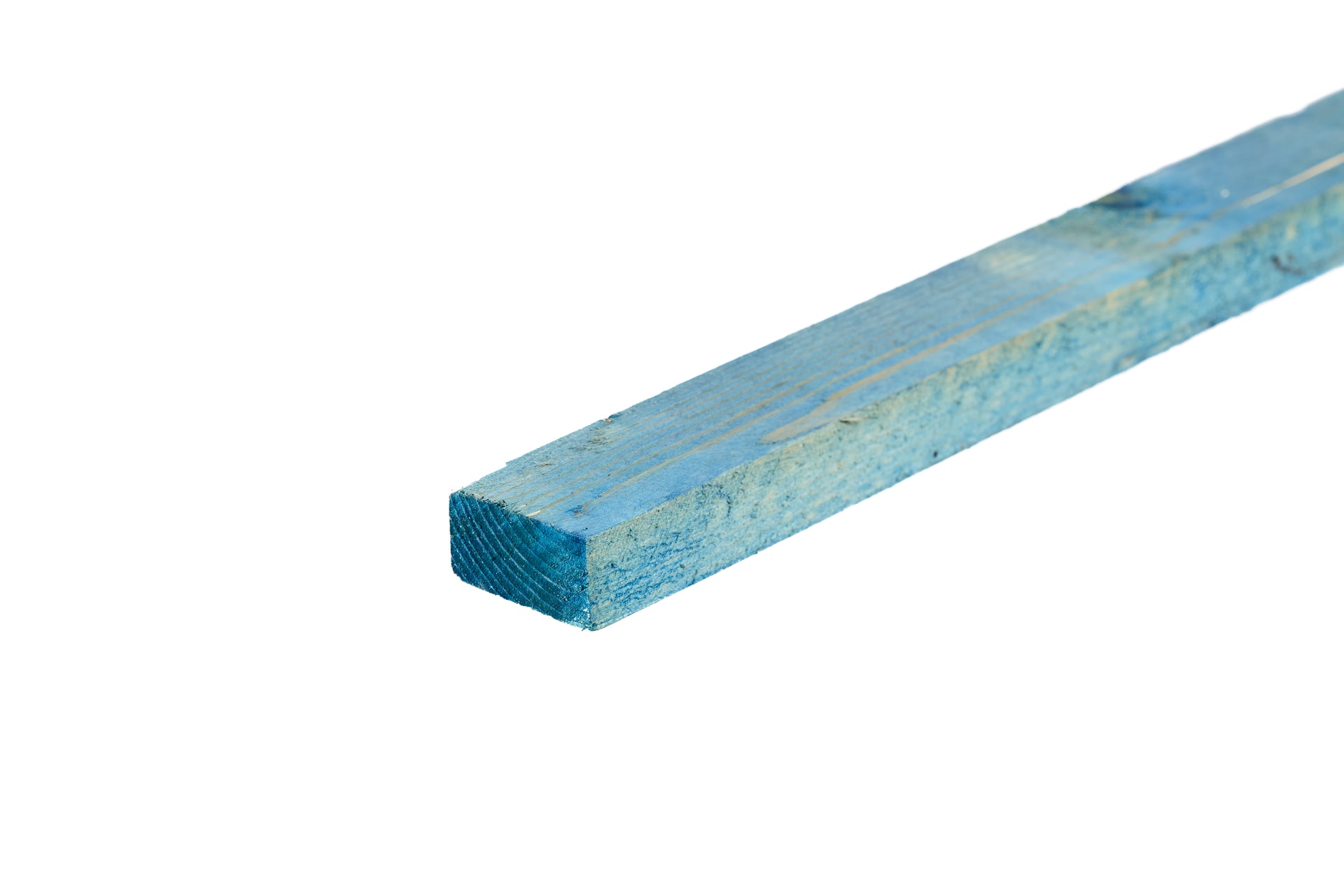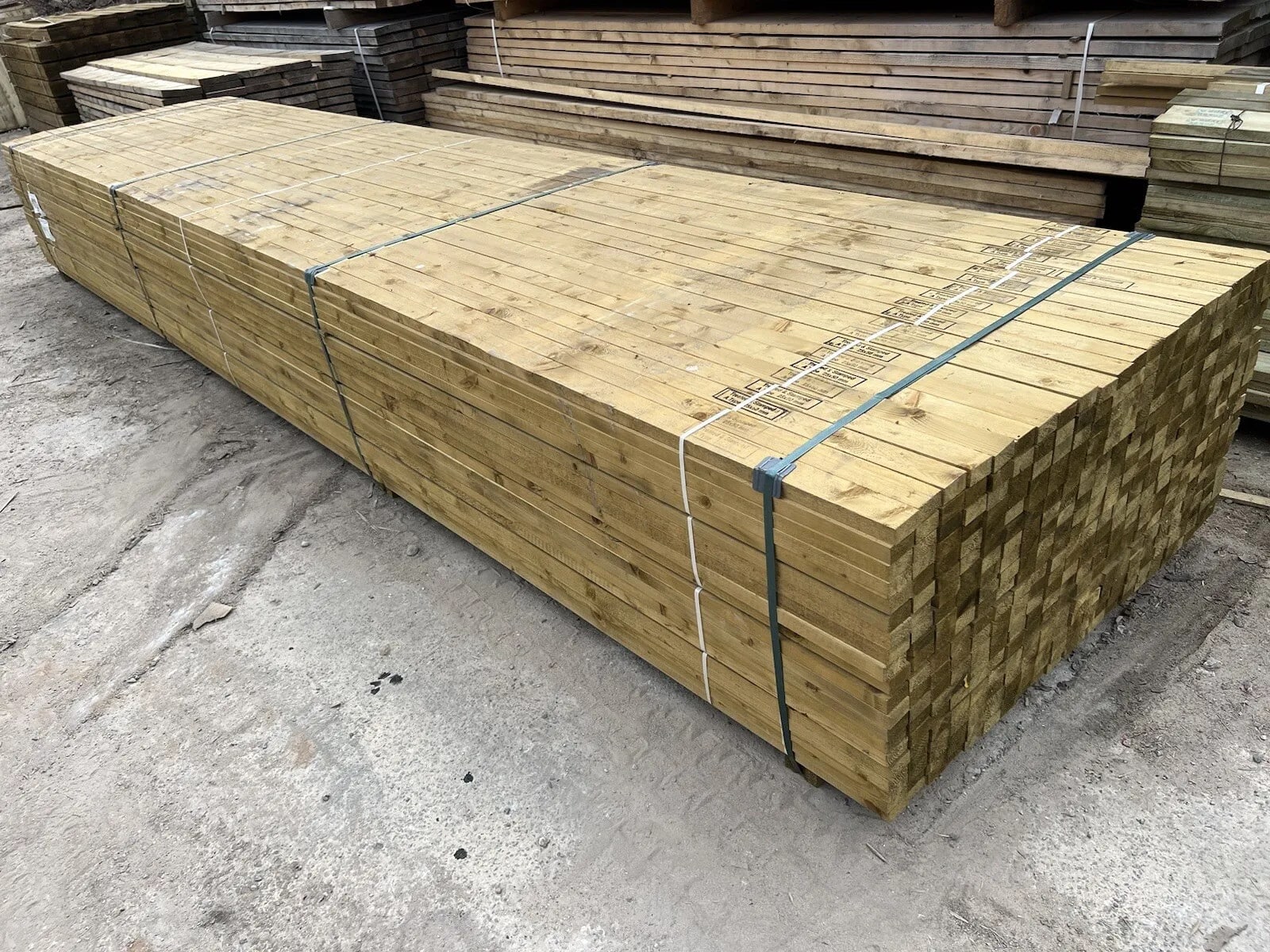Roof Batten
(22 Products)Roofing battens are long, narrow strips of timber that are fixed horizontally across a roof's structural framework, usually spanning from rafter to rafter or over trusses. Their primary role is to provide a secure fixing point for roofing materials such as tiles, slates, or metal sheets.
What Are Roof Battens?
Roof battens, also referred to as tile battens, wooden battens, counter battens, roofing laths, or cladding battens, are narrow, elongated strips that are fixed horizontally to the rafters or trusses of a pitched roof.
Their primary purpose is to provide a secure fixing point for roof coverings such as tiles, slates, or shingles. By creating a regular, evenly spaced framework across the roof structure, battens help ensure that the roof covering is well aligned and evenly supported.
They also aid in ventilation and drainage beneath the tiles, helping to extend the lifespan of the roof and prevent moisture build-up. Roofing battens must meet specific size and grading standards to comply with building regulations and to ensure they can safely bear the load of the chosen roofing material.
We stock both pre-graded and ungraded battens to cater to a wide range of roofing projects.
Please note that our suppliers stock varying roof batten colours, therefore we cannot guarantee the specific colour you will receive. However, rest assured that the colour of the dye has no impact on the batten's performance or durability. Since battens are not visible once installed, the colour is purely cosmetic and has no bearing on the final appearance or function of your roofing system.
Applications
- Support for Roof Coverings: Roof battens provide a framework for securing various roof coverings, such as tiles, shingles, metal sheets, or roofing membranes. The battens create a stable surface for the roof covering to be nailed or fastened onto, ensuring it remains securely in place, even in adverse weather conditions.
- Improving Roof Ventilation: In some roofing systems, particularly those with pitched roofs, roof battens create a gap between the roof covering and the roof deck. This gap allows for air circulation and ventilation beneath the roof covering, helping to regulate temperatures and prevent moisture buildup, which can lead to mould, rot, and other issues.
- Water Management: Roof battens can also help manage water runoff by providing a raised surface for the roof covering. This elevation allows water to flow freely off the roof and away from the building, reducing the risk of water infiltration and damage to the roof structure.
- Alignment and Spacing: Roof battens ensure uniformity and proper spacing of roof coverings, such as tiles or shingles. They help maintain consistent alignment and spacing, which is essential for both aesthetic reasons and the functionality of the roof system.
Benefits
- Suitable to provide the fixing point for roofing materials such as shingles or tiles
- They keep the roof covering in straight, uniform rows and provide a solid foundation for nails or clips used to attach the tiles or slates
- They keep clips and nails securely in place, even in high winds
- Roof tile battens also have an effect on the weatherproofing
Roofing Timber Batten Installation Tips
- It is important when installing pressure treated roof battens to ensure that they are all perfectly horizontally and vertically aligned, in order to provide a sturdy fixing point for the roof tiles. If there are irregularities, this could have an impact on the integrity of the roofing structure and the weatherproofing and protection that it provides.
- It may be necessary to use small pieces of treated timber as packing behind roof battens to even out any irregularities.
- It should be noted that when fitting roofing, a horizontal treated wooden batten should be used just above the bottom of the roof cladding to deny entry to small animals and pests. This markedly reduces the risks of pests getting in and helps to secure the structure against the hazards that this can ultimately cause.
- It is important to check that you have selected the correct tools and size and gauge of slate battens for the job at hand, and this depends on the span of the rafters and the roof covering that you are using. This will have a direct effect on the weather tightness of the finished roof and should be a step that is considered very carefully.
- You must make sure that you are using the right size of nails to affix the wooden battens to the rafters. 3.35mm nails tend to be the recommended minimum diameter, along with a penetration of at least 40mm in order to ensure they are securely and safely fixed.
- When installing roof battens, we recommend starting at the lower edge of the roof and nailing them into place or otherwise affixing them directly over the rafters. This adds to the sturdiness of the job and ensures that there is a firm base to attach the outer roof covering.
- Once the wooden battens are installed, the final roof covering is applied (tiles, slates etc). If the roof battens have been applied correctly, this should make the final steps a lot easier.
Explore our comprehensive blog on Roof Batten Installation for more insider tips and tricks.
Frequently Asked Roof Batten Questions
What Are Roof Battens Treated With?
Roof battens are typically treated with preservatives to shield them from environmental threats such as moisture, fungal decay, and insect infestation. These treatments significantly enhance their durability and lifespan, particularly under harsh weather conditions.
A commonly used preservative is Tanalith E (Copper Azole), a water-based wood preservative that includes copper and an organic co-biocide. This treatment protects the battens from rot, decay, and wood-boring insects, ensuring they maintain their structural integrity over time.
How Long Does A Roof Batten Last?
The lifespan of roof battens can vary widely based on several factors including the material used, the quality of the treatment, environmental conditions, and the quality of installation.
Generally, treated timber battens, which are most commonly used, can last anywhere from 15 to 25 years. However, if the battens are exceptionally well-maintained and the conditions are favourable, they could potentially last even longer (up to 60 years!).
What Are Common Timber Roofing Batten Sizes For Cladding?
Although timber battens are known predominantly as a roofing product, they can also be used for cladding. Cladding batten sizes are very similar to the roof batten range, with dimensions of 19mm x 38mm, 25mm x 38mm and 25mm x 50mm. These then come in lengths of 3.6m and 4.2m respectively.
The timber battens should be at least one and a half times the thickness of the cladding to ensure that they are thick enough to take the fixings where overlapping cladding panels are used. Again, this is a way to ensure the strength and durability of the finished project as well as ensure that the work done can keep out the elements.
What Is The British Standard For Roof Battens UK?
BS 5534:2014 is the British Standard for roof battens and all of the roof battens for sale on our website conform to this as a matter of course.
We sell a variety of competitively priced solutions for roofing requirements, as well as a huge range of other good quality building materials to suit any project.















